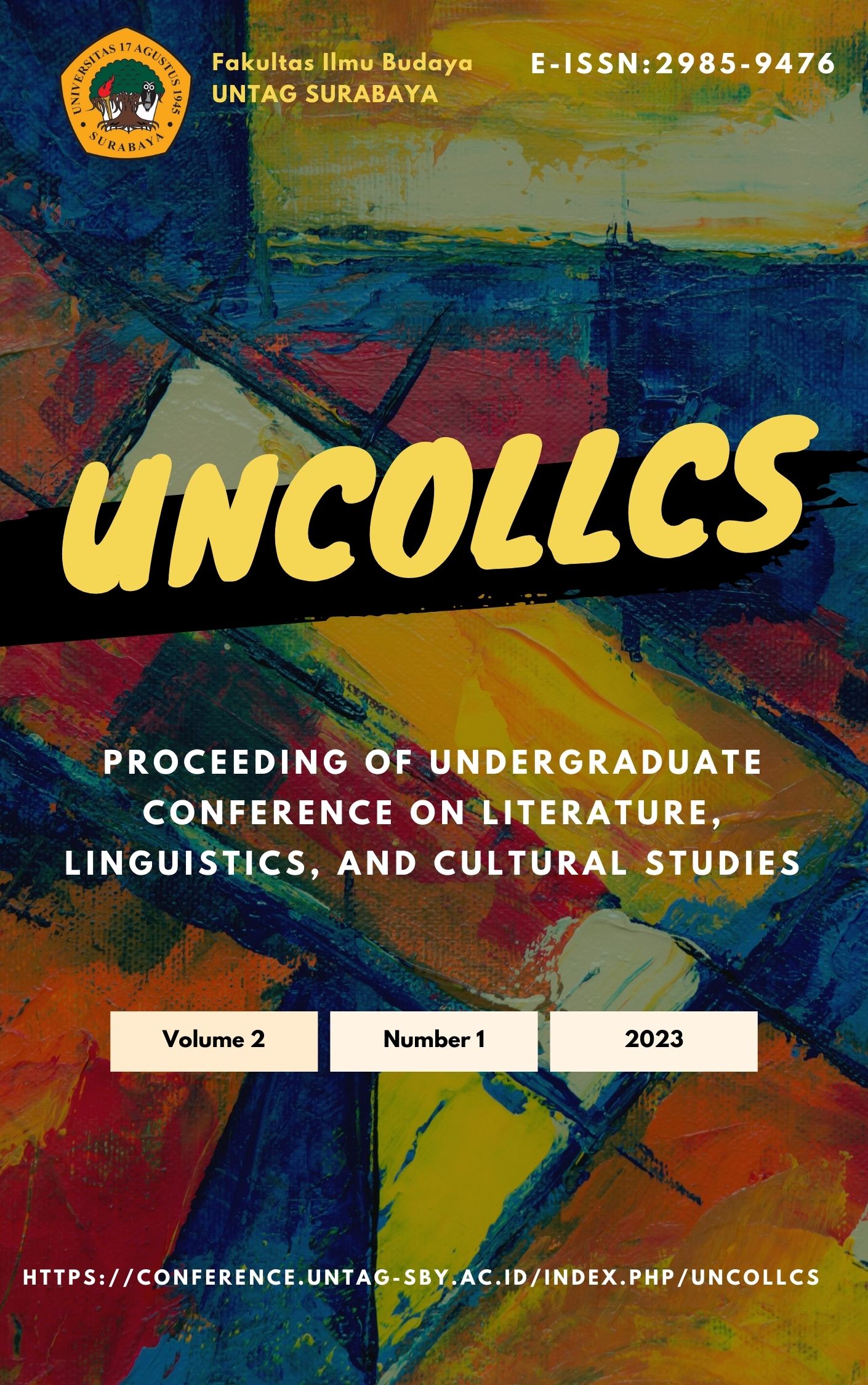Wabi Sabi in Wabicha Tradition
DOI:
https://doi.org/10.30996/uncollcs.v2i1.2531Abstract
The wabicha flow of chanoyu has a lot of simplicity and beauty that is displayed in every procession of the ceremony by changing things that were previously luxurious to be simpler such as chashitsu walls made of wood and thatched roofs, ceremonial utensils made of natural materials, paintings or calligraphy purchased from local merchants, and chabana from local flower gardens. The element of beauty is in the shape, texture, motif or pattern, and atmosphere created in the chanoyu ceremony. The terms in the ceremonial procession show that the host and guests must respect each other. The use of materials by utilizing natural resources creates a simple, harmonious, calm and peaceful atmosphere. This research aims to explain how the representation of wabicha flow in the chanoyu tradition, how the ceremonial procession in the wabicha flow, and the elements of wabi sabi in the wabicha flow. The research method used is descriptive qualitative. While the research approach is a document study approach.
References
Atsil Radhwa, Banafsaj (2022) PENGETAHUAN MAHASISWA UNIVERSITAS DARMA PERSADA FAKULTAS BAHASA DAN BUDAYA JEPANG TERHADAP UPACARA MINUM TEH DI JEPANG.
Berliana, A. (2022). Pengaruh Zen Buddhism Dalam Chanoyu
Billah, A. A., Dariana, S. B., & Janti, I. S. CHANOYU DAN PATEHAN TRADISI MINUM TEH DUA NEGARA BERBEDA.
Danandjaja, James. (1997). Folklore Jepang (dilihat dari kacamata Indonesia). Jakarta: Pustaka utama grafiti.
Fajria, N. (2015). Kesederhanaan Wabicha dalam Upacara Minum Teh Jepang.
Izumi, 5(1), 37–43.
Handayani, Ratna. (2010). Prinsip Dasar Budha Zen dalam Chanoyu.
https://journal.binus.ac.id/index.php/Lingua/article/view/361
HILMA, HILMA (2004) PERANAN SEN NO RIKYU PADA ARSI TEKTUR DAN DEKORASI SUKIYA.
Hisamatsu, Shin'ichi (1982). Zen and The Fine Arts. Tokyo; New York: Kodansha International.
Juniper, Andrew (2003). Wabi Sabi: The Japanese Art of Impermanence. Tuttle Publishing.
Lawrence, Robyn Griggs (2004). The Wabi-Sabi House: The Japanese Art of Imperfect Beauty. New York: Clarkson Potter.
Merry, A., Widya, C., & Handayani, R. (n.d.). Penjelasan Singkat Chanoyu. 45, 129– 139.
Mozaina Nurul, I. (2020). ANALISIS PEMAHAMAN MAHASISWA PROGRAM STUDI BAHASA DAN KEBUDAYAAN JEPANG UNIVERSITAS DARMA PERSADA TERHADAP MAKNA YANG TERKANDUNG DALAM KONSEP UPACARA
MINUM TEH (茶の湯) DI JEPANG (Studi Kasus Terhadap Mahasiswa Program Studi Bahasa dan Kebudayaan Jepang Angk.
Nomasa, Wako. 1998. The Kodansha Bilingual Encyclopedia of Japan, Tokyo : Kodansha International, Ltd.
Okakura, Kakuzo. The Book of Tea. (2008).
Plutschow, H. (1999). An Anthropological Perspective on the Japanese Tea Ceremony. Anthropoetics: The Journal of Generative Anthropology, 5(1).
Sadler, A. L. 1998. Cha-no-yu The Japanese Tea Ceremony. Tokyo: Charles.E.Tuttle Company.
Sen Sōsa, Cha no yu nyūmon: Omotesenke, Nihon Hōsō Shuppan Kyōkai. (1995). Takeda, T.,
Kamagahara, Y., Yu, X., Kida, N., Hara, T., & Ota, T. (2017). Effect of Japanese Style Bowing on the Perception of the Person Receiving the Greeting. Transactions of Japan Society of Kansei Engineering, 16(1), 67–73.
Tanaka, Sen’o. (1998). The Tea Ceremony. Japan: Kodansha International and Dai Nihon
Downloads
Published
How to Cite
Issue
Section
License
Copyright (c) 2023 Proceeding of Undergraduate Conference on Literature, Linguistic, and Cultural Studies

This work is licensed under a Creative Commons Attribution-NonCommercial-ShareAlike 4.0 International License.










